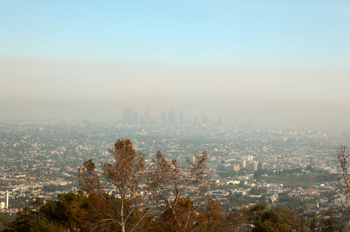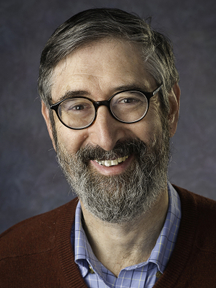
D.C. Circuit’s decision on ozone regulation has implications for science and policy in agencies.
The D.C. Circuit Court of Appeals delivered a decision last week that allows an agency to differ from its expert scientific panel. The case involved the validity of the Environmental Protection Agency’s (EPA) air quality standards for ozone, the chief constituent of urban smog. The court upheld the primary (health-based) standards, but remanded the secondary (public welfare-based) standard for further explanation by EPA.
Ozone is a dangerous air pollutant. Ozone has been linked to many effects on health (including, possibly, premature mortality) and on trees, vegetation, and crops. The levels of the primary and secondary standards are thus very important in determining how much protection there will be for humans and the environment, respectively.
In 2008, EPA tightened the ozone standards to set both the primary and secondary standards at 75 parts per billion, averaged over an 8-hour period. Challenges were brought by both industry and environmental groups before the D.C. Circuit.
In its ruling last week, the court held that EPA was reasonable in departing from the recommendations for the primary standard from its scientific advisory board, the Clean Air Science Advisory Committee, known as CASAC. That board recommended that the primary standard be set between 60 and 70 parts per billion. EPA rejected this recommendation, saying there was too much scientific uncertainty about low-level effects to justify setting the primary standard below 75 parts per billion.
According to the court, it was not clear whether CASAC’s recommendation of 60 to 70 parts per billion rested on science–a belief, for instance, that health effects were occurring below the levels EPA thought –or on policy–the view that EPA should be protective in the presence of scientific uncertainty. The court, though, assumed the latter. It held that the policy judgment of EPA overrides CASAC’s so long as the agency provides a rational explanation of why EPA rejected the CASAC recommendations. Here, the court said, EPA was entitled to differ with CASAC on how to handle uncertainty. This makes explicit that EPA need not always be protective as its scientists say it should.
Is this a wise decision? The environmental law professor in me says no. CASAC is a nonpartisan board with much expertise. It is immune from the kind of political pressure that influences agency managers. It tends to emphasize protection of public health and welfare. So its judgment on the standard needed should arguably be followed as long as it is rational.
But the administrative law professor in me differs. A decision about the proper level of the air quality standards rests not only on science, but also on policy. Scientists can and should advise about these matters. But the ultimate decision is still one of policy, an area in which scientists’ values have no more validity than anyone else’s. And because the decision is one of policy, it ought to be made by those accountable to the political process whose purpose, after all, is to let the populace determine policy. Of course, there need to be checks, such as assuring that decisions are justifiable on the merits, rather than determined simply by political influence. But the principle holds nonetheless.
While the principle behind the court’s decision is right, EPA’s explanation may not seem rational. The agency reasoned that a tighter standard rested on the assumption that there is a continuum of health effects below those observed, and the agency was unwilling to accept that assumption because it might result in a standard tighter than necessary to protect public health. But health and air pollution specialists have known for decades that there are no risk-free levels of air pollutants. Instead, pollutant effects indeed form a continuum from the least to the most serious.
Thus EPA’s explanation seems unreasonable. Perhaps the agency meant something less politic: that while there might be effects at low levels, the agency wished to reserve the decision about whether those effects are indeed health effects until more is known. Again, the question of whether something is a health effect goes beyond science. Is coughing for a few seconds a health effect against which the primary standards should protect? How about shortness of breath that happens only to one in a thousand of the 25 million asthmatics in America? Clearly those questions involve policy decisions. The appropriate check on them is to ask whether the agency’s explanation makes sense.
This can be seen from the court’s remand of the secondary air quality standard. EPA’s staff and CASAC recommended that the standard should be based on the cumulative hours of exposure to ozone by crops and other flora. Both CASAC and EPA staff proposed a range of possible choices within which the standard could reasonably be set.
EPA’s management was under tremendous pressure from inside and outside the government to adhere to the traditional practice of setting the ozone secondary standard at the same level as the primary standard. EPA justified maintaining this practice by comparing the value at the top of the staff-recommended range with setting the secondary standard at the same level as the primary standard. Finding little difference in the amount of protection afforded, EPA concluded that setting the secondary standard at the level of the primary standard was appropriate.
The problem is that EPA rejected without explanation the lower values in the CASAC-recommended range. Nor did it explain why it thought its secondary standard protected public welfare. So a remand for further explanation was appropriate. In other words, policy must be buttressed by expertise.
Thus, the take-away lesson from the case is that an agency can differ with its scientific advisory board. But the agency has to provide a rational explanation. This accords with the purposes of administrative agencies: to make reasonable policy decisions and use scientific expertise.




